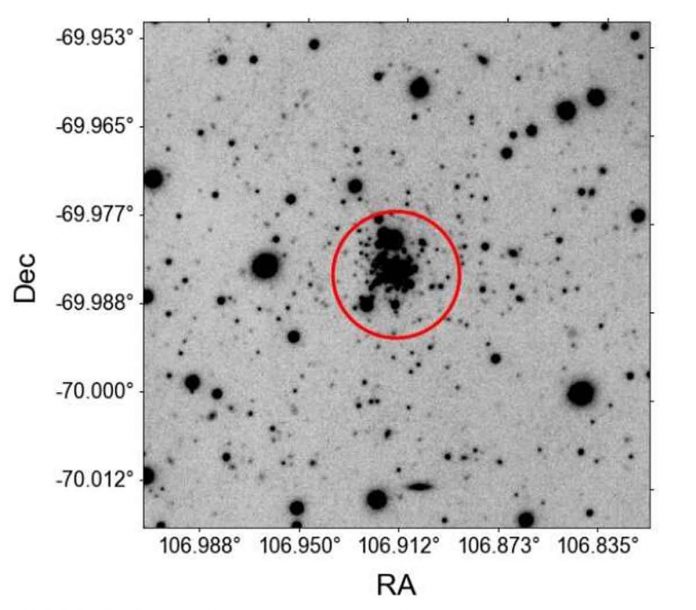European astronomers used the VLT Survey Telescope (VST) to investigate KMHK 1762, a strange star cluster in the Large Magellanic Cloud (LMC). The study’s findings were published on arXiv.org on July 19.
The LMC star cluster KMHK 1762 (also known as OHSC 37) The metallicity of the cluster is -0.91, and its age is estimated to be around 2.7 billion years. However, an examination of the color-magnitude diagram (CMD) of KMHK 1762 suggests that the cluster may be older than previously thought.
A group of astronomers led by Massimiliano Gatto of the Capodimonte Astronomical Observatory in Naples, Italy, investigated this issue, hypothesising that KMHK 1762 is a rare case of a star cluster in the so-called LMC age gap. Previous observations of LMC have revealed that this galaxy has almost no star clusters with ages ranging from 4 to 10 billion years. So far, only two confirmed star clusters have been identified within this age range.
Gatto’s team examined deep optical photometry obtained with VST as part of the Yes, Magellanic Clouds Again (YMCA) survey. Data from the European Space Agency’s Gaia satellite were used to supplement the study.
“In this letter, we report the results of our new study of KMHK 1762 SC [star cluster], which is based on the YMCA deep and accurate photometry and is supplemented with parallaxes and proper motions (PMs) from the Gaia Early Data Release 3 (EDR3),” the researchers wrote.
According to the new research, KMHK 1762 should be older than previously thought. The astronomers estimate that this cluster is about 5.5 billion years old based on shallower photometry. This makes KMHK 1762, along with ESO121-03 and KMHK 1592, the third star cluster in the LMC age gap.
According to the observations, KMHK 1762 has a reddening of approximately 0.08 mag and a metallicity of -0.65. The CMD depicts a clump of stars known as main-sequence turn-off (MSTO) stars, a sub-giant branch (SGB), and a few stars in the red giant branch (RGB) and the red clump (RC).
The authors’ discovery calls into question the existence of the star cluster age gap in LMC. They argue that the increased number of confirmed or suspected clusters formed during the age gap period suggests that the age gap is an observational bias caused by the combination of shallow photometry and limited investigation of the LMC’s outer regions.
“In fact, most of the works devoted to the search for undiscovered star clusters focused on the LMC central regions, leaving the outskirts (i.e. d > 4 kpc) largely unexplored,” the researchers concluded.

